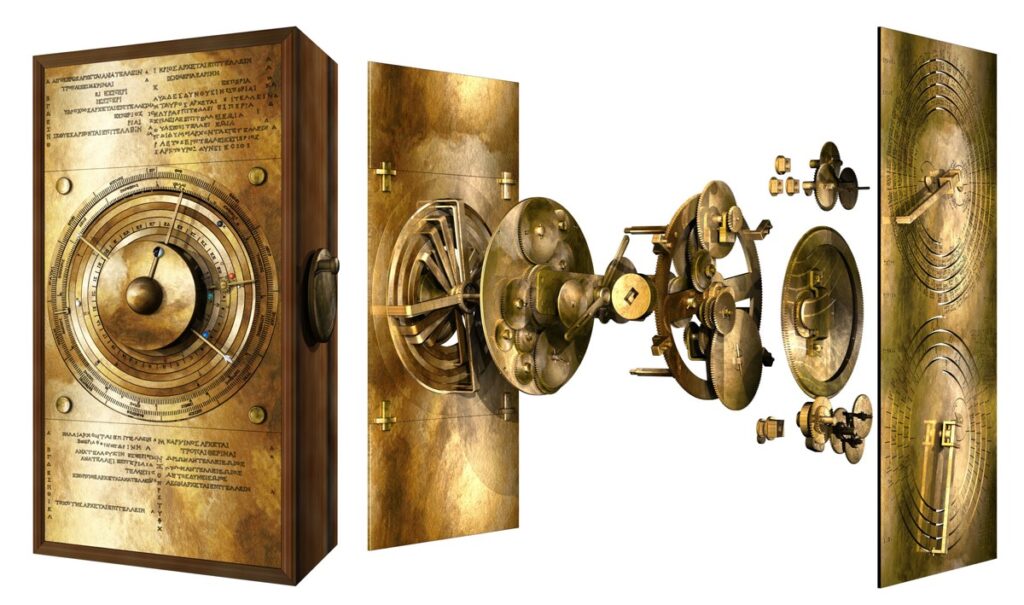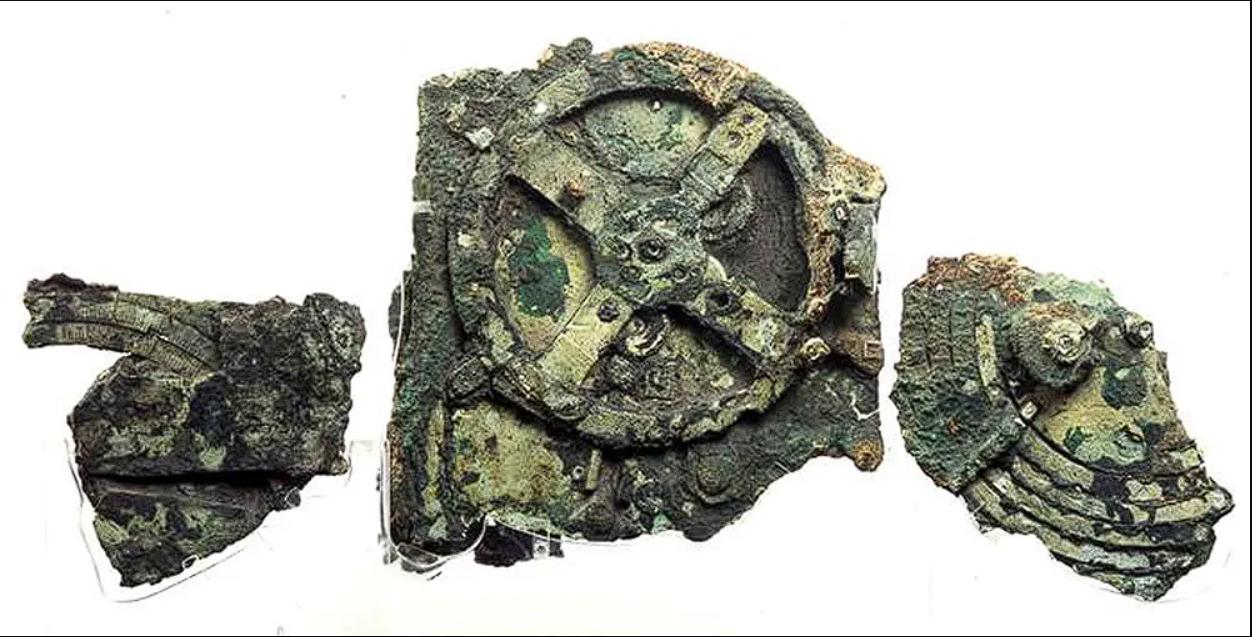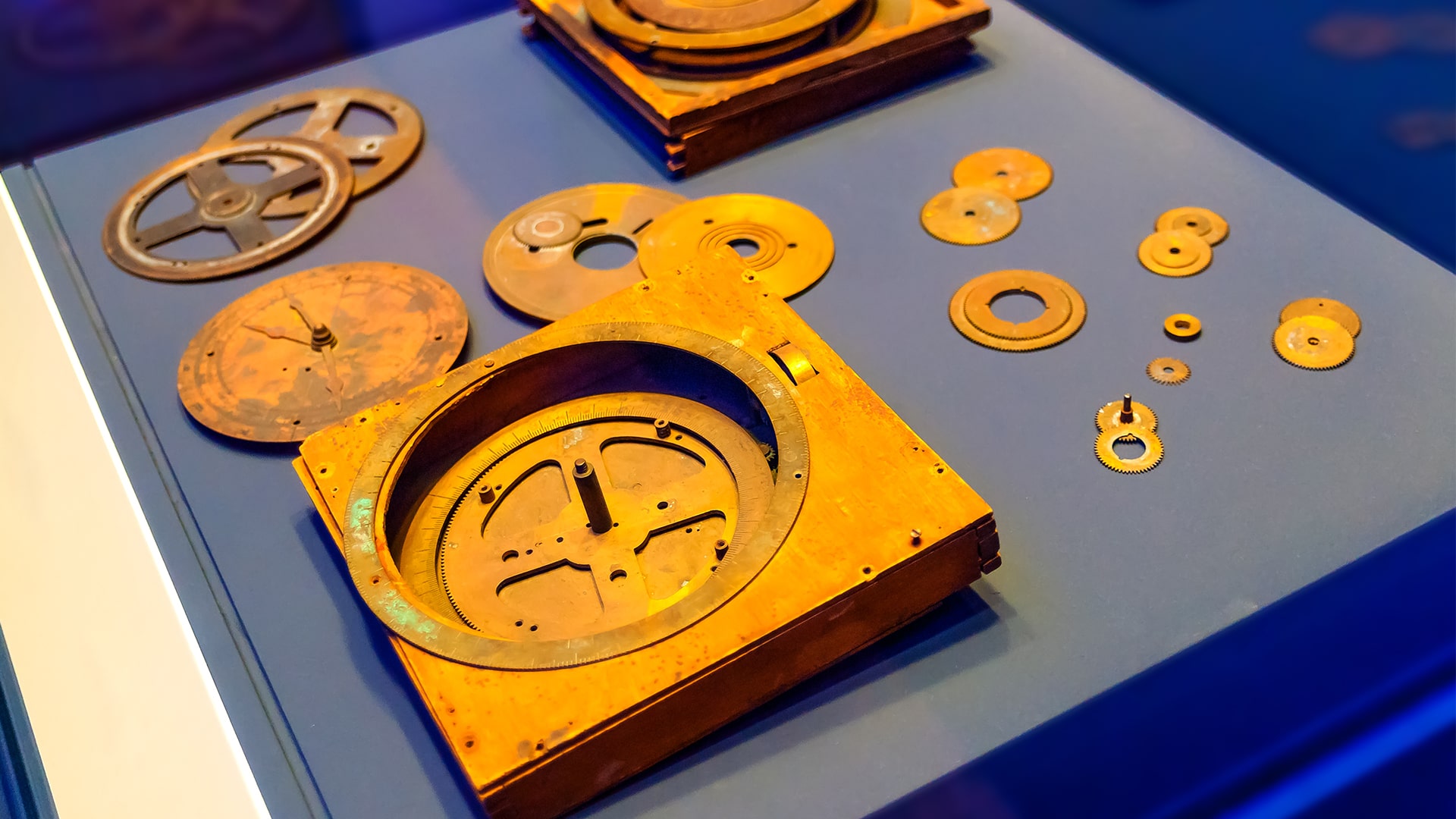Introduction: A Technological Marvel Lost to Time
Deep beneath the waters off the coast of Antikythera, Greece, an ancient enigma lay hidden for over 2,000 years. In 1901, divers searching a shipwreck stumbled upon a corroded chunk of bronze that would later challenge everything we thought we knew about ancient civilizations. This mysterious artifact, now known as the Antikythera Mechanism, is considered the world’s first analog computer, capable of predicting astronomical events with astonishing precision.
Who built this device? How did such advanced technology exist in an era long before modern engineering? And could there be more undiscovered examples of lost ancient knowledge?

The Discovery of the Antikythera Mechanism
An Accidental Find in a Shipwreck
In the spring of 1900, a group of Greek sponge divers set out on what they thought would be a routine expedition. However, as they explored the depths near Antikythera, they came across something completely unexpected—an ancient Roman shipwreck, its remains scattered across the seabed. Among the treasures retrieved were statues, pottery, and a seemingly unremarkable lump of corroded metal.
A Machine Hidden in Bronze
At first glance, the artifact was dismissed as debris, but when it was brought to the surface, archaeologists noticed something unusual. The object contained visible gears, inscriptions, and a level of craftsmanship that seemed far too advanced for its time. Over the following decades, scientists painstakingly studied the mechanism, slowly revealing its secrets.
Unlocking Its Purpose
By the mid-20th century, experts realized that this was not just any artifact—it was a complex astronomical device. Using X-ray technology, researchers reconstructed its internal workings, uncovering an elaborate system of bronze gears designed to track the movements of celestial bodies. The Antikythera Mechanism could predict eclipses, chart planetary motions, and even determine the timing of the Olympic Games.

How Did the Ancient Greeks Build Such an Advanced Device?
A Lost Tradition of Mechanical Engineering?
The sheer complexity of the Antikythera Mechanism raises an important question: How did the ancient Greeks acquire such advanced knowledge of mechanics? The device’s intricate gear system suggests an understanding of mathematics and engineering comparable to technology that wouldn’t reappear until the Renaissance—over a thousand years later.
Possible Influences from Earlier Civilizations
Some historians speculate that Greek scientists may have drawn inspiration from Babylonian astronomical records, which contained detailed observations of planetary movements. Others believe the device was part of a broader Greek tradition of mechanical innovation, influenced by thinkers like Archimedes and Hipparchus, the latter of whom was known for his advanced knowledge of celestial cycles.
Was This Device Unique?
One of the most intriguing mysteries is whether the Antikythera Mechanism was a one-of-a-kind creation or part of a larger, now-lost technological tradition. If more devices like it once existed, could there be others still waiting to be discovered?
Modern Efforts to Understand the Mechanism
Cutting-Edge Technology Meets Ancient Ingenuity
In recent years, modern scientists have used CT scans and 3D reconstructions to analyze the internal components of the Antikythera Mechanism. These studies have revealed over 30 interlocking gears, each precisely crafted to perform specific calculations related to the sun, moon, and planets.
Deciphering the Inscriptions
The mechanism contains Greek inscriptions, some of which have been deciphered to provide clues about its function. These texts suggest that the device was not only used for astronomical calculations but also for educational purposes, possibly as a teaching tool for scholars or navigators.
Theories on Its Origin
While no definitive proof exists, many scholars believe the device was built in Rhodes, a hub of Greek science and engineering. Some attribute it to the workshop of Hipparchus, one of the greatest astronomers of antiquity. Others theorize that it may have been commissioned for a wealthy patron or a high-ranking official.

The Legacy of the Antikythera Mechanism
Rewriting the History of Technology
The discovery of the Antikythera Mechanism has forced historians to rethink the technological capabilities of the ancient world. It challenges the notion that complex mechanical devices only emerged during the Industrial Revolution, proving that advanced engineering existed in antiquity.
The Impact on Modern Science
Today, the mechanism serves as an inspiration for researchers studying the history of technology. It has even influenced modern clockmakers and engineers, who marvel at its precision and ingenuity.
Could There Be More Lost Inventions?
If such an advanced device was created over 2,000 years ago, what other forgotten technologies might still be hidden beneath the sands of time? Could there be more undiscovered inventions that challenge our understanding of history?
Conclusion: A Mystery That Continues to Fascinate
Despite over a century of research, the Antikythera Mechanism remains one of the greatest mysteries of the ancient world. Its intricate design and advanced functions suggest a level of technological sophistication previously thought impossible for its time.
Will we ever fully understand the secrets behind this remarkable device? And if the ancient Greeks were capable of such innovation, what other forgotten marvels might still be waiting to be uncovered?
The search for answers continues.
